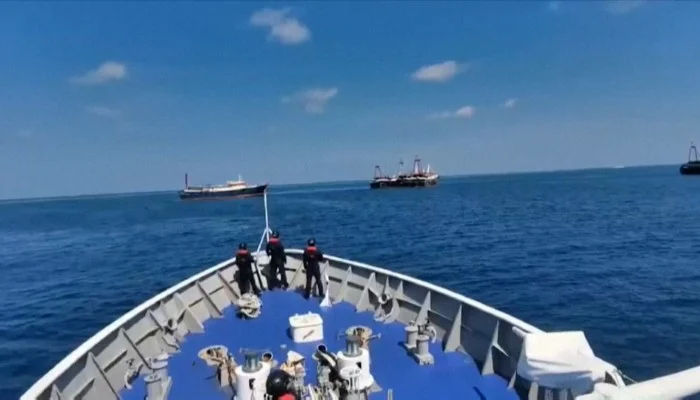With the Biden administration rightly focused on the conflicts in Ukraine and the Middle East, there is always the danger of a new overseas crisis emerging in a different part of the world — say, a rival power taking advantage of the distractions to flex its muscles or cause mischief.
That seems to be what’s happening now in the Pacific, with China as the key trouble maker.
And this may be too gentle a description for China’s dangerous actions in the disputed South China Sea. Better to say that Beijing appears to be engaged in deliberate acts of provocation, testing the United States and one of its chief regional allies, the Philippines.
The South China Sea has long been seen as the likeliest potential flash point between the United States and China — which is why we have argued on these pages the importance of resuming military-to-military contacts as quickly as possible, including a crisis communications hotline, to avoid accidents or unintended mishaps from escalating into all-out conflict. There appeared to be some small hope for restoring those ties with the announcement that the Defense Department will be sending a representative to Beijing for an international three-day gathering, known as the Xiangshan Forum, hosted by the Chinese Defense Ministry, starting Sunday.
China’s conduct in recent days in the South China Sea seems neither accidental nor unintentional. On Oct. 22, Chinese vessels deliberately collided with a Philippine coast guard ship and a supply vessel sent to resupply a small Philippine marine detachment stationed on a rusting World War II-era transport ship being used to stake the Philippines’ claim to a contested outpost known as Second Thomas Shoal. China claims the shoal — and in fact, all of the South China
Sea — as its own, and was trying to block what Beijing called the movement of “illegal construction materials” to the
isolated reef.
China has also stepped up its provocative maneuvers directly against U.S. aircraft flying in international airspace over the disputed South China Sea. Just two days after the incident with the Philippine ships, a Chinese J-11 jet attempted a reckless nighttime intercept of a U.S. B-52, flying above and below it and coming within just 10 feet of the bomber.
The U.S. military released a grainy video of the near midair collision, accusing the Chinese pilot of flying in an unsafe and unprofessional manner.
Perhaps this is President Xi Jinping’s way of diverting his people’s attention from growing domestic problems — a faltering economy and a leadership crisis. He just officially sacked his defense minister, Li Shangfu, missing for weeks,and he formally stripped his ousted foreign minister, Qin Gang, of his last remaining official title, pointing to serious fissures within the ruling Communist Party.
While these dismissals might be seen as Mr. Xi taking a firmer hand against corruption, the purging of such men, who he himself had promoted, raises the specter of an isolated autocrat unable to trust his own chosen subordinates — but eager to scapegoat them.
Mr. Xi might be assuming the United States is too focused on Israel’s war with Hamas and Russia’s invasion of Ukraine to pay attention to the Chinese military’s increasingly confrontational moves. Chinese officials, masters at gaslighting and projecting their government’s own actions onto others, of course accused the U.S. military of making a provocative move with a Navy warship. Beijing released its own video to back up its specious claim.
Whatever China’s precise rationale might be, it’s imperative that the administration send constant reminders to Beijing and to America’s allies in the region that the United States is a Pacific power and can deal with multiple crises at once. President Biden, speaking this week alongside Australia’s visiting prime minister, sent the right signal, emphasizing that the United States’ defense commitment to the Philippines “is ironclad.” He added that any attack on Philippine vessels, aircraft or troops would trigger the 1951 mutual defense treaty between the two countries, which commits the United States, in the event of such an attack, “to meet the common dangers in accordance with its constitutional processes.” Restating this deterrent commitment is the right way to reinforce it. And reinforcing it is the right way to make sure China is not tempted to test it.

